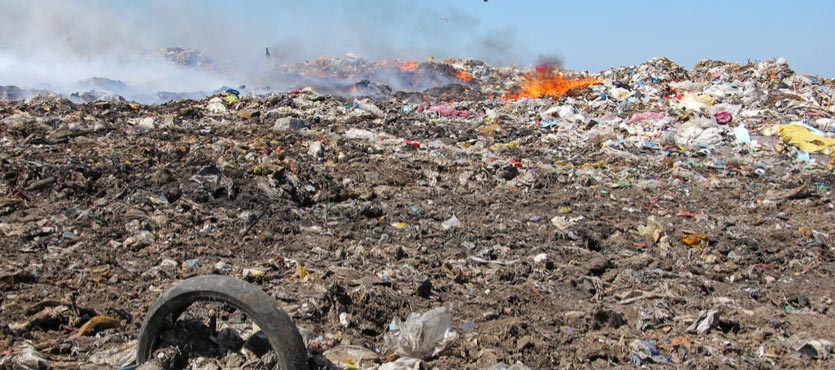At one point during the Iraq War, soldiers at Joint Base Balad, deep inside the infamous Sunni Triangle, burned 200 tons of waste a day in a 10-acre, open-air pit.
Soldiers doused human waste, mechanical parts, medical waste, radio batteries, and all the other waste of war with JP-8 jet fuel, which released clouds of benzene gas as it burned. Later soil samples at various locations revealed dangerously high levels of metals, dioxin, hydrochloric acid, and other particulate matter linked to cancer and other serious health conditions. In addition to the smoke that one witnesses described as like “a San Francisco fog,” the burn pits deposited ash and soot everywhere, so that even the air conditioners blew concentrated particulate matter.
As early as 2006, after the first victims started getting sick, an Air Force officer warned that burned pits constituted “an acute health hazard.” At about that same time, KBR contractors started manning the pits in Iraq, even though they developed serious symptoms, like respiratory issues and severe skin rashes. In fact, according to some sources, KBR supervisors did not follow Army regulations in this area and threatened to punish whistleblowers or complainers. The Veterans’ Administration has consistently denied that there is a link between burn pits and adverse health conditions, which comes as no surprise to some, because the VA did not take action on behalf of Vietnam-era Agent Orange victims until 1991. Now, two Senators labeled burn pits as the “new Agent Orange.”
One specialist opined that burn pit illnesses are like the sickness that befell 9/11 World Trade Center first responders, only much worse.
Burn Pit Use
Five of the six bases that had the worst reports of burn pit-related illnesses, including Balad, were on top of documented WMD sites, a fact which no doubt contributed to the seriousness of the injuries. Some people opine that aerial bombardment released hazardous chemicals that settled onto the soil and later found their way into the thick smoke billowing from burn pits in the area. In fact, many doctors believe that once carcinogens are released into the air, they inevitably migrate to human bodies.
For many veterans and returning servicemembers, the combination of toxic burn pit smoke and latent chemical weapons particles was simply too much for their health to bear. Now, doctors hope that the lungs of these deceased victims might yield more scientific evidence about the link between pits and illness, because burned tissue would help prove that an artificial toxic smoke caused the illness, as opposed to dirt or dust, which is what the VA claims.
Burn Pit Injures
So far, about 50,000 veterans have added their names to the online burn pit registry, complaining of illnesses like:
- Chronic Obstructive Pulmonary Disease: COPD is a degenerative condition that only occurs in people with damaged lungs. IN addition to chronic breathing problems, victims have high risk of developing lung cancer, heart disease, and other even more serious conditions.
- Chronic Bronchitis: If shortness of breath lasts for more than a few months, the entire body is affected.
- High Blood Pressure: Partially to compensate for the lack of oxygen, many circulatory systems kick into overdrive, causing dangerous hypertension.
- Loss of Function: Once toxic material enters the lungs, it eventually spreads to the muscles, so many victims are unable to climb stairs, are frequently tired, and must deal with other life-altering side effects.
Some people have criticized the burn pit registry, claiming that its questions are loaded to bring about answers that the government wants to hear.
Compensation for Service-Related Injuries
For private contractor burn pit victims from KBR and other employers, it really does not matter whether the VA comes around on these injuries or not because they are eligible for compensation under the Defense Base Act. Essentially, if victims have illnesses or injuries that can be medically related to their deployment overseas, the DBA can apply.
The DBA pays injury victims two-thirds of their lost wages while they recover. In addition to base pay, most average weekly wage (AWW) calculations also include performance bonuses and non-cash compensation, like housing allowance.
The DBA also pays for medical bills, and that includes everything from emergency care to physical rehabilitation; in addition to professional services and charges, the DBA also pays for prescription drugs, medical devices, travel expenses, and all related medical out-of-pocket costs. In most cases, injured contractors can see their own doctors and change physicians during the course of treatment.
For prompt assistance from an experienced attorney, contact Barnett, Lerner, Karsen & Frankel today, because you have a limited amount of time to act.

